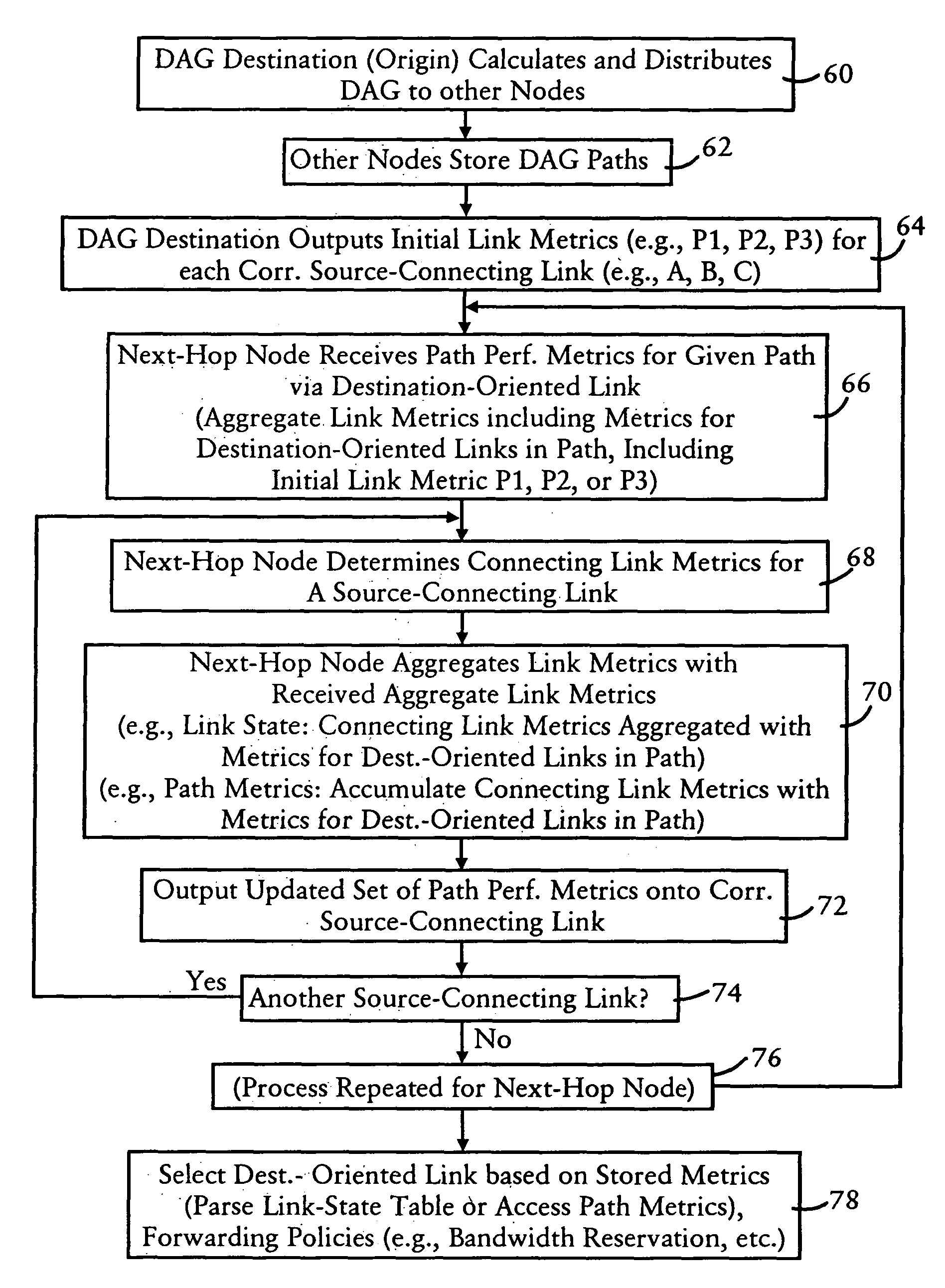Forwarding packets to a directed acyclic graph destination using link selection based on received link metrics
a technology of received link and forwarding packets, which is applied in the field of forwarding packets to a directed acyclic graph destination using link selection based on received link metrics, can solve the problems of difficult modeling and quantifying the characteristics and signal quality of wireless propagation between a wireless transmission source and a receiver, and the inability to achieve hierarchy in ad hoc networks
- Summary
- Abstract
- Description
- Claims
- Application Information
AI Technical Summary
Benefits of technology
Problems solved by technology
Method used
Image
Examples
Embodiment Construction
[0029]FIG. 2 is a diagram illustrating the layer 2 mesh network of FIG. 1 having established a directed acyclic graph (DAG) 12 for reaching a DAG destination 14 along selected paths, based on distribution of link metrics, according to an embodiment of the present invention. In particular, the DAG 12 enables any source node 16 to send data to the DAG destination 14 via at least one path. The directed acyclic graph 12, generated by the DAG destination N014, also referred to as the “origin”, is distributed to each of the other network nodes 16 (N1, N2, N3, and N4), enabling each of the other nodes 16 (N1, N2, N3, and N4) to establish at least one path to the DAG destination N0 based on forwarding data via successive destination-oriented links A, B, C, D, E, F, or G.
[0030]The term “destination-oriented link” refers to any link that transmits data from a network node to either the DAG destination 14, or a next-hop node 16 having a corresponding destination-oriented link for transmitting ...
PUM
 Login to View More
Login to View More Abstract
Description
Claims
Application Information
 Login to View More
Login to View More - R&D
- Intellectual Property
- Life Sciences
- Materials
- Tech Scout
- Unparalleled Data Quality
- Higher Quality Content
- 60% Fewer Hallucinations
Browse by: Latest US Patents, China's latest patents, Technical Efficacy Thesaurus, Application Domain, Technology Topic, Popular Technical Reports.
© 2025 PatSnap. All rights reserved.Legal|Privacy policy|Modern Slavery Act Transparency Statement|Sitemap|About US| Contact US: help@patsnap.com



